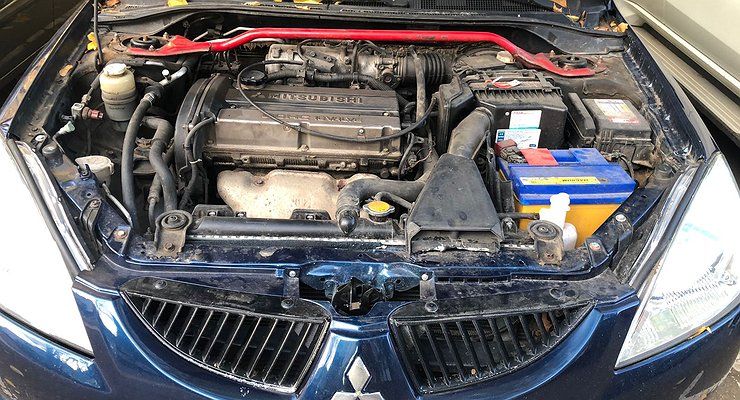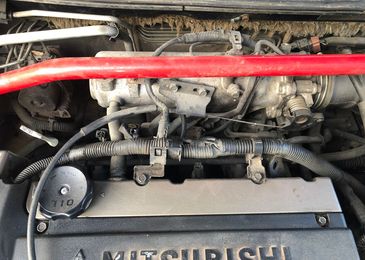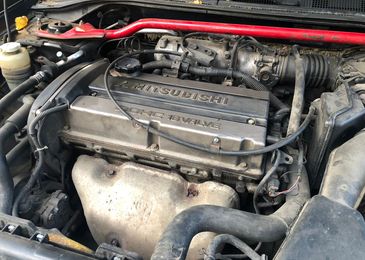How to reduce fuel consumption by a quarter, paying once 45 rubles?
- October 19, 2022
- 0
Fuel consumption, such as the amount of control and the frequency of refueling, absolutely excites all drivers. And of course everyone wants to pay less and go to
Fuel consumption, such as the amount of control and the frequency of refueling, absolutely excites all drivers. And of course everyone wants to pay less and go to

Coincidentally, an internal combustion engine needs fuel: fires in the chambers cause the pistons to move, turning the crankshaft, which in turn transfers energy through the transmission to the wheels. The amount of fuel burned depends not only on the size of the engine and its design, but also on its age.
And the point is not only in iron, but also in another, very important element of the whole process – in oxygen. Oddly enough, the combustion of both gasoline and diesel requires the most ordinary air, which is supplied to the accelerator, where the fuel and oxygen are mixed into the air-fuel mixture. Everyone knows this, but few realize that air is also involved in other processes of the combustion engine. Not even the air itself, but its reasonable absence – vacuum.
Over time – and however much has passed, it is a matter of operation and maintenance – the engine begins to consume more fuel and along with the growing appetite, the power decreases. This tandem is supposed to tell the driver that there is an unplanned air leak somewhere. It was the same with us: Mitsubishi Lancer did not want to go fast despite the powerful two-litre engine, but burned 12-13 liters per hundred.
After carefully examining the “still life under the hood” with the engine running, applying the hearing organs to the diagnostics, the “culprit” was found: the vacuum line on the fuel pressure regulator was only for appearances. The rubber tube was kept “on snot”, all cracked and dried out. She didn’t even have to take it off – she disappeared herself.
The fuel pressure regulator – also known as RTD – is a very important part of the combustion engine, which regulates the pressure in the fuel system. This is a simple mechanical valve that lowers or increases the pressure, creating an optimal combustible mixture. We will certainly tell about the device separately – it is worth it – but now it is important to understand only one feature of the design – the regulator consists of two chambers – fuel and vacuum, to which a separate fitting leads. He is exactly what we are interested in.
If no vacuum is created in the vacuum chamber of the RTD, the valve is constantly open, the pressure in the system is maintained solely by the gas pump, which pumps constantly, and the fuel goes to the “return”. Simply put, the fuel pump tries to create the right pressure, but can’t. As a result, the car has a hard time starting, the humidity feels sharp, stalls at idle and refuses to go “all the way”.
A six-inch section of an unnamed, but suitable, petrol-resistant hose stretched over the fitting showed a very curious effect. Firstly, our Lancer has become much more cheerful to start up more cheerfully and increase speed.
But all these are sensations, but the clear calculation is as follows: previously, one refueling for 1000 rubles was enough for 180-190 km of running in the combined cycle, and after replacing the same tube, the final result reached 240-250 km . However, 25% with a one-time investment of 45 rubles is an excellent result!



Coincidentally, an internal combustion engine needs fuel: fires in the chambers cause the pistons to move, turning the crankshaft, which in turn transfers energy through the transmission to the wheels. The amount of fuel burned depends not only on the size of the engine and its design, but also on its age.
And the point is not only in iron, but also in another, very important element of the whole process – in oxygen. Oddly enough, the combustion of both gasoline and diesel requires the most ordinary air, which is supplied to the accelerator, where the fuel and oxygen are mixed into the air-fuel mixture. Everyone knows this, but few realize that air is also involved in other processes of the combustion engine. Not even the air itself, but its reasonable absence – vacuum.
Over time – and however much has passed, it is a matter of operation and maintenance – the engine begins to consume more fuel and along with the growing appetite, the power decreases. This tandem is supposed to tell the driver that there is an unplanned air leak somewhere. It was the same with us: Mitsubishi Lancer did not want to go fast despite the powerful two-litre engine, but burned 12-13 liters per hundred.
After carefully examining the “still life under the hood” with the engine running, applying the hearing organs to the diagnostics, the “culprit” was found: the vacuum line on the fuel pressure regulator was only for appearances. The rubber tube was kept “on snot”, all cracked and dried out. She didn’t even have to take it off – she disappeared herself.
The fuel pressure regulator – also known as RTD – is a very important part of the combustion engine, which regulates the pressure in the fuel system. This is a simple mechanical valve that lowers or increases the pressure, creating an optimal combustible mixture. We will certainly tell about the device separately – it is worth it – but now it is important to understand only one feature of the design – the regulator consists of two chambers – fuel and vacuum, to which a separate fitting leads. He is exactly what we are interested in.
If no vacuum is created in the vacuum chamber of the RTD, the valve is constantly open, the pressure in the system is maintained only by the gas pump, which pumps constantly, and the fuel goes to the “return”. Simply put, the fuel pump tries to create the right pressure, but can’t. As a result, the car has a hard time starting, the humidity feels sharp, stalls at idle and refuses to go “all the way”.
A six-inch section of an unnamed, but suitable, petrol-resistant hose stretched over the fitting showed a very curious effect. Firstly, our Lancer has become much more cheerful to start up more cheerfully and increase speed.
But all these are sensations, but the clear calculation is as follows: previously, one refueling for 1000 rubles was enough for 180-190 km of running in the combined cycle, and after replacing the same tube, the final result reached 240-250 km . However, 25% with a one-time investment of 45 rubles is an excellent result!
Source: Avto Vzglyad
I’m Sandra Torres, a passionate journalist and content creator. My specialty lies in covering the latest gadgets, trends and tech news for Div Bracket. With over 5 years of experience as a professional writer, I have built up an impressive portfolio of published works that showcase my expertise in this field.